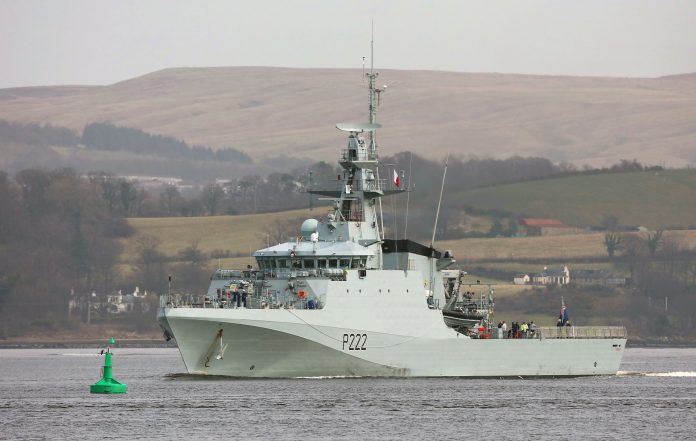A new naval era has begun in the Falklands as HMS Forth begins her first patrol around the islands.
After a 9,000-mile journey from Portsmouth, the 2,000-tonne patrol ship arrived in the South Atlantic islands ready to take on duties after HMS Clyde retired just before Christmas.
Her successor is the first of five second-generation River-class ships built with the goal of stationing them long-term around the globe, protecting UK interests/citizens, working will regional allies and flying the flag for Britain.
Forth picks up where her predecessor left off, working with the RAF and Army units based in the Falklands, providing reassurance to locals, visiting inhabitants of the outlying islands, and supporting the territory’s authorities in everything from ceremonial events through to assisting with emergencies.
Even before the ship arrived at East Cove Military Port – about 30 miles southwest of the Falklands’ capital Stanley – she was working with two RAF Typhoon interceptors to see how the air and naval forces can work together.
Once at the remote port, the Commander of British Forces South Atlantic, Brigadier Nick Sawyer, was on hand to welcome Forth to the islands, stepping aboard to chat with Commanding Officer Commander Bob Laverty and his team.
“Arrival at East Cove was met with excitement for those who had never operated in the environment before,” said Commander Laverty.
“And it was met with enthusiasm by all the ship’s company who were looking forward to making an impact in an operational theatre, as well as taking advantage of the fantastic adventurous training, wildlife and rich history the Falkland Islands have to offer.
“For me, it’s fantastic to be back and the presence of HMS Forth signifies both posture and the continuous UK commitment to the Falklands.”
The journey to the Falklands took Forth to Gibraltar and Mindelo in the Cape Verde Islands.
In the latter, the ship’s company paid their respects to British sailors buried in the Municipal Cemetery, where AB Craig Pollock paid tribute to fellow naval reservist T Henderson, laying a wreath on the grave of the 17-year-old Shetlander who died serving with cruiser HMS Donegal on convoy duties in 1916.
From Cape Verde, the ship faced a 16-day, 5,200-mile voyage to her new home – a journey which meant she was at sea over both Christmas and New Year.
That included passing over the Equator and upholding the nautical tradition of the ‘Crossing the Line’ ceremony, paying homage to King Neptune and his band of dubious characters from under the ocean, followed by a ‘hands to bathe’ – allowing all on board to swim in the Atlantic with nothing beneath them but more than 4,000 metres of water.
from Defense News by DefenceTalk.com https://ift.tt/36VLGjg
via Defense News

No comments: